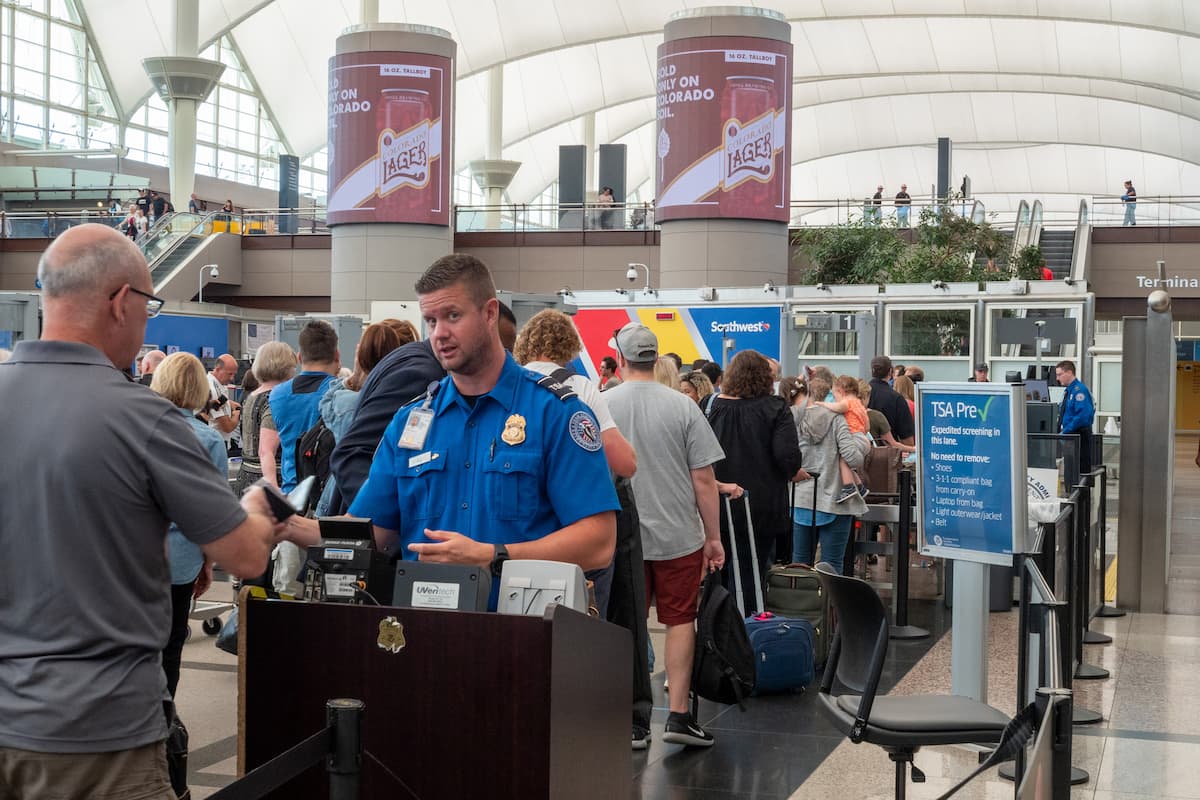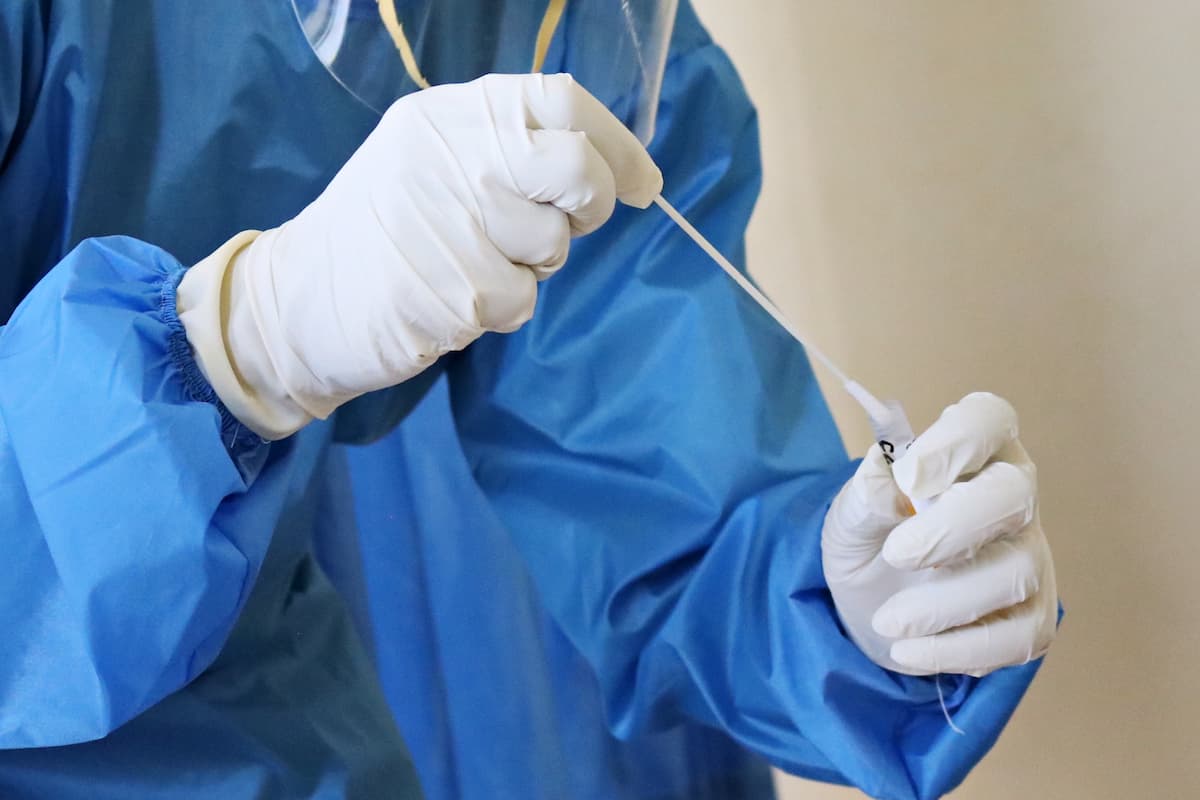Why Does The TSA Always Swab Your Hands?
After the events of September 11th, 2001, the United States Government created the Transportation Security Administration (TSA) to ensure the US transportation system was safe and secure for all travelers.
Several regulations were enacted at this time, but many were focused on airport security, including (but not limited to) ID requirements, limits on carry-on items, and enhanced screening procedures.
As a result of updated security protocols, the TSA now swabs hands, electronic devices, and other personal items looking for explosive residues. The TSA may swab passengers flagged in their system or select random people. How frequently anyone gets swabbed depends on the airport, how often they travel, and the current threat level – but many times, it’s just a coincidence or luck.
This article discusses why the TSA swabs hands, which passengers tend to receive enhanced screening, and how to speed up airport security checks.
How Does the TSA Screen Passengers and Luggage?

TSA agents use several methods to screen passengers and their luggage as they pass through airports across the United States.
Anyone who travels is familiar with many of these processes, which include:
- photo-matching passengers with approved ID
- scanning all luggage using an x-ray or CT scanner
- using metal detectors or Advanced Imaging Technology (AIT) and/or manual pat-downs
- swabbing hands, shoes, electronics, and personal items for explosive residue.
Air travelers cannot check into their flights, go through security, or board their planes without a valid government-issued ID such as an Enhanced Driver’s License or passport.
All carry-on and checked luggage will be scanned using x-ray machines and/or CT scanners to ensure passengers aren’t transporting dangerous, illegal, or prohibited items.
Guests going through security checkpoints must pass through the AIT or metal detector, and if they trigger an alert, they might also be patted down by a TSA officer of the same gender.
While you can decline the AIT, random people pre-selected for enhanced screening, and anyone with an internal medical device must go through it.
Why Does the TSA Swab Passengers?
The TSA officers may swab passengers looking for traces of explosive residue on their hands, luggage, shoes, or electronic devices.
These swabs are immediately tested by explosive detection technology and then thrown away.
If TSA officers detect an anomaly during security screening, they may also swab mobility aids, medical equipment, external medical devices, and items inside luggage.
When the TSA opens a checked suitcase to swab or search it, they leave an inspection notice before closing the bag.
In security areas where travelers must remove their shoes, officers may make accommodations for passengers with reduced mobility and swab their shoes instead of asking for them to be removed.
Passengers with Pets
People who travel with pets should expect to have their hands swabbed at the security checkpoint.
Travelers must also remove their pet from its carrier and carry them through the metal detector while the x-ray or CT scanner scans the pet carrier.
If required, a TSA officer may conduct additional screening with the pet after it passes through the metal detector.
Passengers with Special Medical Equipment
Passengers with prosthetics or those who travel with a wheelchair, walker, or cane will likely have their hands, shoes, and mobility devices swabbed.
The TSA doesn’t have a better way to screen these items and understands they’re essential for traveler comfort.
Individuals with external medical devices, such as an ostomy bag, can also expect to be swabbed and may have additional enhanced screening.
The TSA also has a Passenger Support Specialist at each airport who can facilitate travelers requiring accommodations during the screening process.
Anyone with questions or concerns about the security process should contact TSACares at 1-855-787-2227 at least 72 hours before their scheduled flight.
Why Are Some Passengers Swabbed More Than Others?

While most enhanced security procedures are meant to be implemented at random, some passengers seem to get their hands swabbed more often than others – which can feel frustrating and unfair and cause delays or missed flights.
Sometimes, however, hand swabbing is not random.
Airlines use Secure Flight to prescreen travelers before they arrive at the airport.
Using trusted traveler lists and international watchlists, they match their passengers with a list of low- and high-risk names.
Passengers deemed high-risk often receive enhanced screening.
Travelers who often receive enhanced screening and swabbing can contact the Department of Homeland Security (DHS) about the Traveler Redress Inquiry Program.
They can help individuals determine why they are always pulled for additional screening and work to fix it.
Another way to avoid getting swabbed as often is by enrolling in TSA PreCheck, which makes the security process more efficient.
The program allows passengers to use the quicker, often shorter PreCheck lines where they don’t have to remove their shoes, belts, laptops, jackets, or liquids, and often aren’t swabbed.
Conclusion
The TSA employs several methods to maintain safe skies for air travel, including photo-matching passengers with approved ID, scanning all luggage, using metal detectors or AITs, and swabbing hands, electronics, and personal items for explosive residue.
Passengers are swabbed at random, when their personal belongings trigger enhanced screening, or when they are flagged using Secure Flight.
Passengers traveling with pets, mobility equipment, and external medical devices are also often chosen for enhanced screening, especially if they can’t use or decline the AIT.
Travelers who feel like they always have their hands swabbed when passing through a TSA security checkpoint likely fall into one of the above categories.
Those who don’t should contact the DHS about the Traveler Redress Inquiry Program.